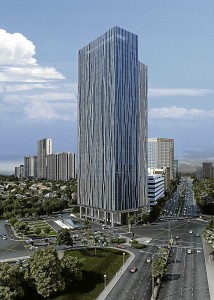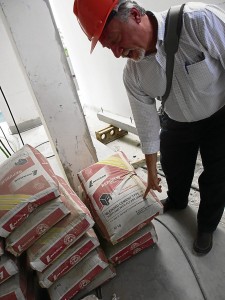30% of MNCs prefer green buildings
As the Philippines positions itself as the regional hub of multinational corporations (MNCs), the demand for environment-friendly smart buildings is gaining traction.
A third of MNCs want their local headquarters in an “intelligent,” eco-friendly skyscraper. This was revealed to Inquirer Property by architects, urban planners, a real estate professor and a consultant for environment sustainable structures.
Architect Willie Coscolluela, principal architect of W.V. Coscolluela & Associates, the local architectural firm behind the Zuellig Building, affirmed this. “You’d be surprised that there are multinational companies with a corporate mandate indicating (they should be in a) green building.”
Many MNCs require LEED
Dean Barone, president of Barone International, a sustainable design support services consulting firm and a Leadership in Energy and Environmental Design (LEED) consultant of Megaworld’s 8 Campus Place in McKinley Hill at the Bonifacio Global City in Taguig, told Inquirer Property that “many multinational corporations require LEED, but are unaware it can be done in the Philippines.”
Barone cited Wells Fargo, HSBC, Shell, Texas Instruments, and Johnson & Johnson as some of the MNCs that mandate LEED certification for all projects worldwide, including the Philippines.
LEED was created by the US Green Building Council, and is the most widely used green rating system worldwide.
Enrique Soriano, professor at Ateneo Graduate School of Business and senior adviser at Wong+Bernstein Business Advisory, said he estimated that “30 percent of MNCs prefer green buildings or LEED-certified developments.”
He explained: “Green growth is gaining momentum across developed and emerging economies like the Philippines. Green-building construction is growing eight times in the global market. Studies have indicated a 13- to 15-percent reduction in operating costs and a 10- to 12-percent increase in values.”
Architect and urban planner Felino Palafox Jr., president of the Philippine Institute of Environmental Planners, said “investors and responsible developers spend a bit more on the first three years on design and construction, and realize more savings on the next 97 years of the building.”
Palafox added, “Less responsible, less enlightened developers cut costs on the design and construction on the first three years of a building, pass on the extra costs of energy, water maintenance repairs to the tenants and buyers for the next 97 years of a building for the inefficiencies in the design and construction—using the cheapest architects, engineers, contractors, suppliers and materials.”
Palafox was educated in green architecture and sustainable urban development during his masteral course in Harvard University.
“Foreign investors prefer LEED certified, or at least buildings designed following green-architecture principles like (allowing in) more natural light and ventilation, (installation of) green roofs, green walls, rainwater harvesting facility, sky gardens, LED lighting and solar wind energy retrofitable in the future when these become less costly, and tall buildings interconnected with skywalks to reduce use of elevators and address evacuation during disasters,” Palafox observed.
Meeting 5 LEED criteria
Megaworld Corp.’s 8 Campus Place will have three towers being built to meet LEED criteria in all five categories: site, water reduction, energy savings, materials and resources, indoor environmental quality and construction. The project is eyed for long-term lease to business process outsourcing companies.
The Zuellig Building, which is vying for the LEED Platinum certification, is a 33-story office tower sheathed in 28,000 square meters of floor-to-ceiling low emissivity glass. It uses the same green technology that’s being used in the Freedom Tower in New York.
The building, previously precertified Gold level under the LEED program of the US Green Building Council, is now vying for the higher Platinum standard. Coscolluela partnered with international architectural firm Skidmore, Owing & Merrill (the same company behind the Freedom Tower) for this project. Recently, Zuelllig also bagged recognition from MIPIM Asia Awards for being the best office and business development.
Greening Ayala Avenue
Coscolluela, who has been an architect for over 50 years, is also the vice president of the Makati Commercial Estate Association (Macea), which manages the 350 buildings in Legazpi and Salcedo villages. “I’m the chair of the beautification of the Makati CBD. We are greening the Ayala Avenue and lighting up the sidewalks and underpasses.”
Coscolluela is also involved with the RCBC Plaza, which won the Asean Energy Awards in 2004.
The CBRE global corporate services team has noted that there is a growing interest, awareness and preference from landlords and occupiers for green buildings in the country.
According to CBRE, there are currently five LEED certified buildings in the Philippines, which include the Asian Development Bank, Nuvali One Evotech, Shell Shared Services Office and Texas Instruments in both Baguio and Clark. Additionally, 58 projects are currently registered for LEED certification.


